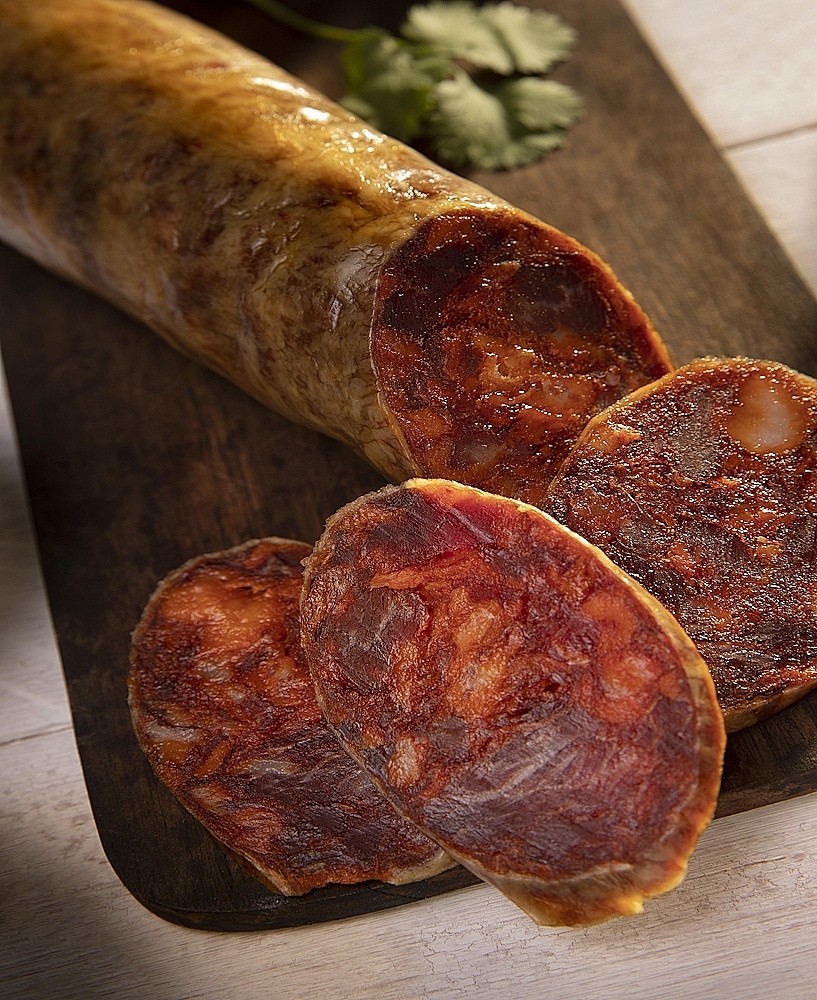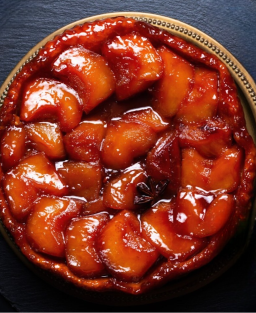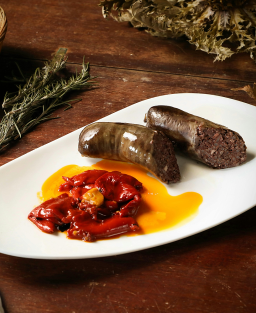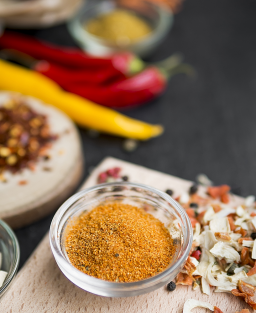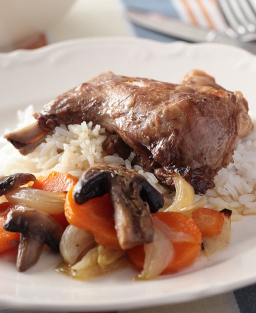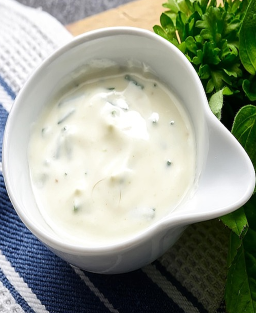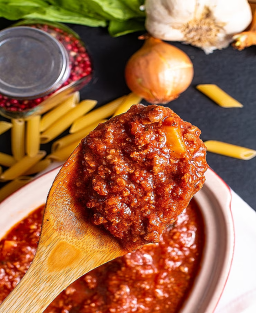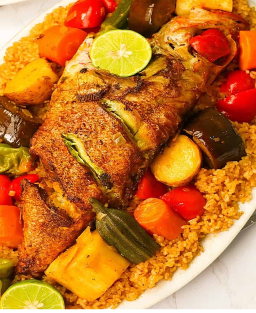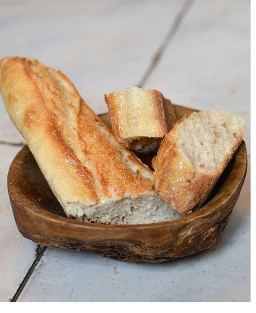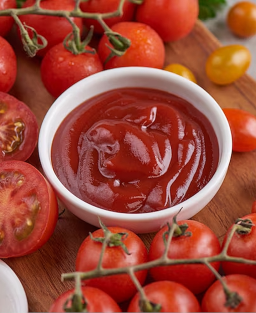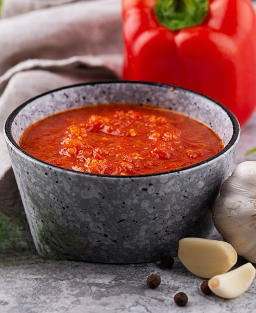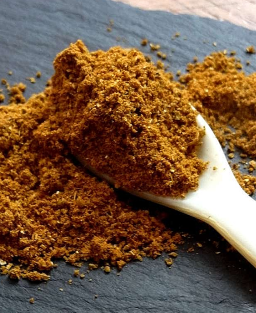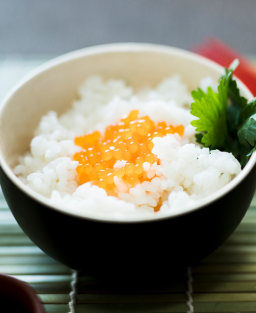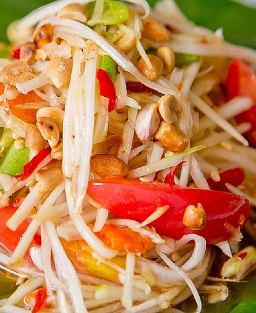- Out-of-Stock
Complete Recipe – Rustic Artisanal Dry Chorizo (5 kg)
Complete Recipe – Rustic Artisanal Dry Chorizo (5 kg)
No nitrites, no industrial fermentation – natural method
Ancient origins
Primitive forms of sausages existed since Antiquity: in Greece, Homer mentions in the Odyssey an “intestine filled with blood and fat” cooked over fire — one of the oldest references to sausages.
In Spain, popular pork processing practices date back to the Iberian Peninsula of the Iberians (4th century BC), who used meat, salt, garlic, and herbs, air-dried.
The role of Rome and the introduction of paprika
During the Roman Empire, salting and smoking techniques were brought to Spain, including sausage making.
However, paprika (and thus the red color) only arrived with the discovery of America in the 16th century.
First written references
The word “chorizo” appears in Spanish writings around the 15th century, referring to a pork sausage seasoned with salt, garlic, and spices.
The Real Academia Española published in 1726 in the Diccionario de Autoridades the first formal definition of chorizo:
“A short piece of casing filled with finely chopped meat, seasoned and generally smoked.”
First documented recipe
An anonymous 16th-century manuscript titled Manual de mujeres contains one of the earliest known chorizo recipes: lean and fat pork meat chopped, sifted flour, garlic, cloves, white wine, salt.
The mixture is shaped, left to rest for a day, then stuffed and smoked.
Royal peak: King Charles IV and the choricero
King Charles IV was charmed during a hunt by a local artisan charcutier, whom he named official court supplier.
This episode was immortalized in the tapestry El choricero José Rico, attributed to Goya’s brother-in-law.
Evolution through the centuries
Before paprika use, chorizo had a darker or lighter color, depending on the presence of blood.
Paprika, introduced from America, transformed chorizo into the bright red sausage we know today, bringing both color and smoky flavor.
With 19th-century industrialization, chorizo became a common product in Spain, eventually an emblem of popular and international gastronomy.
Brief timeline
-
Antiquity: mentions of ancestral sausages
-
Iberians (4th century BC): primitive versions without paprika
-
15th century: first written mentions of the word chorizo
-
16th century: arrival of paprika → red color
-
1726: mention in the official Spanish dictionary
-
Late 18th - early 19th century: royal diffusion (Charles IV)
-
19th century: industrialization and global spread
The characteristic red color of chorizo mainly comes from two natural elements:
Smoked paprika (pimentón dulce and picante)
This is the main ingredient responsible for the red color.
It comes in sweet (pimentón dulce) and hot (pimentón picante) versions.
Paprika is rich in carotenoids, especially capsanthin and capsorubin, two stable red pigments.
During mixing, these pigments deeply color the meat.
Fermentation and drying process
Myoglobin present in the meat (a natural pigment) stabilizes in certain forms in the presence of salt, acidity (wine), and a partially anaerobic environment (inside the casing).
This process, combined with paprika, fixes the dark red color as drying progresses.
Note:
No nitrites are used, so the color is a bit less “vibrant” than in industrial sausages, but it remains naturally red and stable if the recipe is followed well.
Good quality smoked paprika is essential: it provides both color and much of the flavor.
Ingredients (for 5 kg of filling):
-
4 kg pork shoulder (lean meat with some fat)
-
1 kg pork jowl or hard fat (important for juiciness)
-
100 g fine sea salt (20 g/kg for preservation)
-
50 g sweet smoked paprika (pimentón dulce – base of Spanish flavor)
-
25 g hot smoked paprika (pimentón picante – adjust to taste)
-
25 g fresh garlic (crushed or finely chopped)
-
10 g dried oregano (typical of rustic recipes)
-
5 g ground black pepper (optional but traditional)
-
2 to 3 g ground cumin (optional – warm aroma, used in the south)
-
100 ml dry red wine (to slightly acidify)
-
2 to 3 bay leaves (to infuse in wine – optional)
-
10 g sugar (optional – helps natural fermentation)
-
About 6 to 7 meters natural pork casings (caliber 40/42 mm)
Required equipment:
-
Meat grinder (6–8 mm plate)
-
Sausage stuffer
-
Gloves, mixing container
-
Twine
-
Precision scale
-
Drying chamber or temperate ventilated room
-
Hooks or drying rods
Manufacturing steps:
Hygiene
Disinfect everything: equipment, work surface, hands.
All must be clean and cold.
Prepare the meat
Cut meat and fat into 3 to 4 cm cubes.
Chill for 1 hour in freezer (without freezing solid, just to firm up).
Grinding
Grind meat and fat using 6–8 mm plate.
Keep meat very cold.
Seasoning
Mix ground meat with all ingredients.
Add red wine (infused with bay leaves if desired).
Knead vigorously by hand for 10 to 15 minutes. The mixture should be slightly sticky.
Tip: cook a small portion in a pan to test seasoning.
Resting the mixture
Cover and let rest 24 hours refrigerated (max 6 °C).
This rest develops aroma and helps preservation.
Stuffing
Soak casings 30 minutes in warm water and rinse inside.
Stuff without air bubbles and not too tightly.
Form chorizos 30 to 40 cm long and tie with twine.
Natural fermentation (48 to 72 h)
Hang chorizos in a warm, humid place: temperature 20–22 °C, humidity 85–90 %.
A slight sour smell or exudate is normal.
Color darkens.
Drying (4 to 8 weeks)
Move chorizos to a cooler place: temperature 12–15 °C, humidity 70–75 %, gentle ventilation, low or no light.
Drying time: 4 to 8 weeks depending on size and conditions.
Chorizo is ready when it has lost about 30% of its weight.
Storage
Once dried, chorizo can be:
-
Hung in a dry, airy place
-
Vacuum packed
-
Refrigerated
Shelf life: several months.
Tips and tricks
-
If the room is too dry, casings can harden too fast. Protect with a damp cloth or perforated paper bag.
-
Light smoking (oak or beech) is possible but not traditional everywhere.
-
Natural white molds (Penicillium) are normal.
-
If thick green or black spots appear, clean with vinegar.











